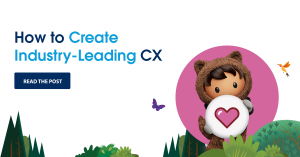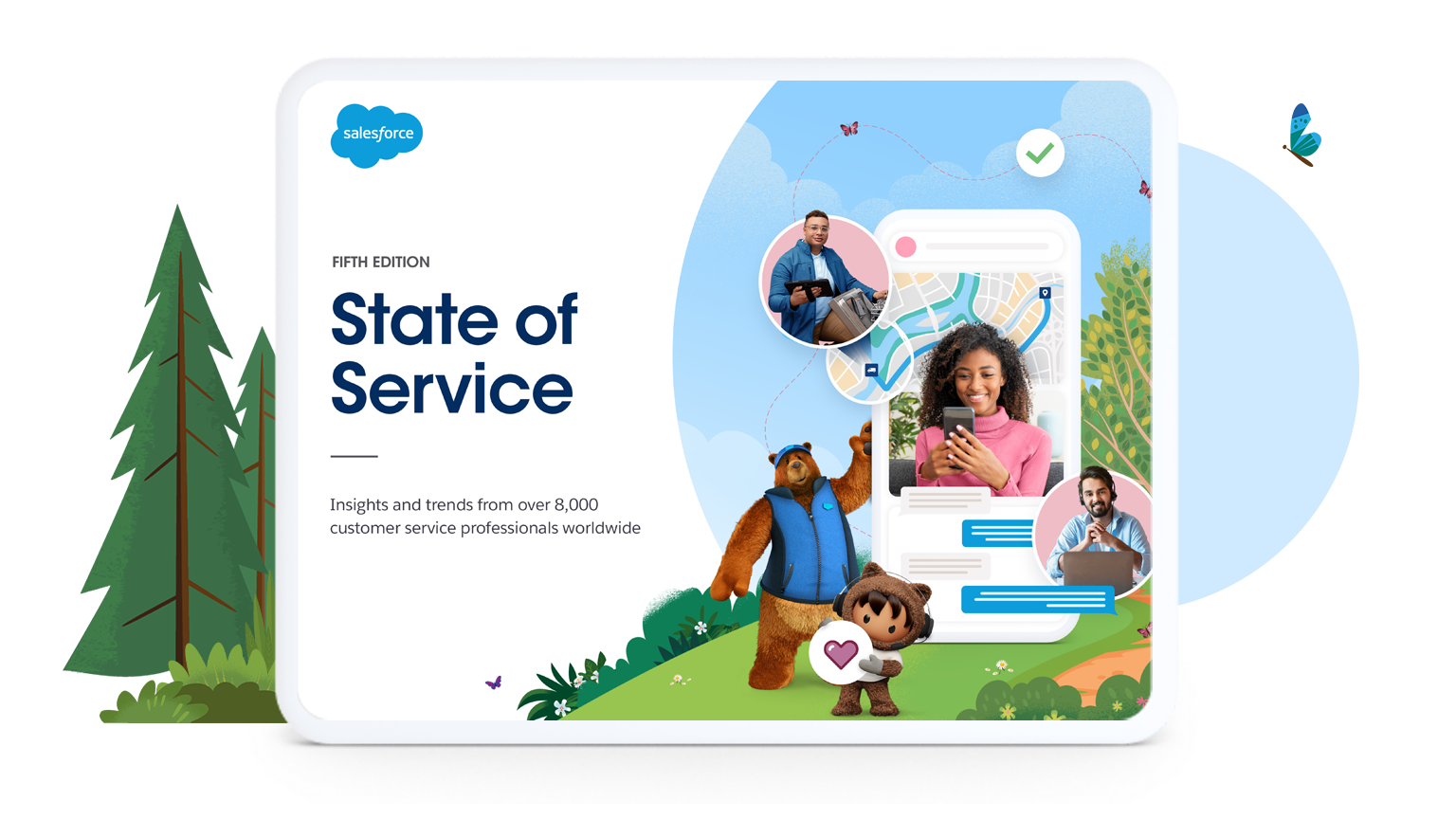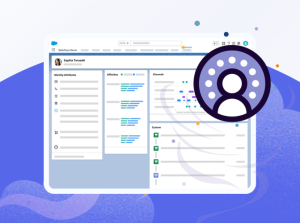The Maturity Matrix: How to Create Industry-Leading CX



The UK Customer Experience Lead, CCXP at Salesforce shares how to create industry-leading customer experiences with the Maturity Matrix.

Andy Butterfield
How to Create Industry-Leading Customer Experiences With the Maturity Matrix
As the UK Customer Experience Lead, CCXP at Salesforce, I meet many customers who know what good customer experience (CX) looks like and how to measure it. They also want to continuously improve.
However, getting board approval for a transformational project that shows the value of customer experience can be difficult. The issue isn’t individuals or their appetite for technology; it’s their business environment. Often, CX strategy doesn’t sit within the overall business strategy. It therefore faces challenges created by existing infrastructure.
Different industries are at different stages of embracing CX. While some think of it as a value and revenue generator, others look at it more like a business necessity — a cost centre and a way of managing complaints. This attitude can isolate CX.
Well-established businesses also face the challenge brought on by their own systems — many are legacy systems, built in-house, and no longer fit for purpose. Moving them onto a single platform — let alone one that uses the latest AI and processes to give a single view of the customer — isn’t a simple task. It’s particularly difficult in businesses prone to acquisitions but it’s not impossible.
So what do you do?
To persuade your business to adopt a better customer experience strategy, you need to first understand the drivers for change — both where they come from and who decides the approach. Companies will have set objectives for the financial year ahead. It’s important to ensure that the CX strategy aligns with — and even helps achieve — these objectives.
CX is critically important to the success of any business. It is also recognised as an opportunity for true differentiation. Companies need to include CX within their strategies as it helps reduce attrition, increase revenue and repeat business, and improve customer satisfaction. Customers want seamless interactions and the ability to self-serve until they need help. At that point, they want businesses to be there instantly. Companies that don’t recognise this will lose out.
Getting a CX strategy in front of — and approved by — company leaders is the first step. You also need to address any internal system challenges.
While there is a range of options (including integration, system replacement, building new internal systems, and more), selecting the right system takes some consideration. As such, it’s essential to build a vision of what is suitable for your company and its customers, and a clear business case. That’s where the maturity matrix comes in.
How you can make sense of the maturity matrix
Recently, I’ve been reviewing the electric car market. I’ve found the process for selecting an e-car very similar to the maturity matrix we use. E-cars are becoming increasingly popular, with a broader range of brands available. There are a variety of pros and cons that make selecting the right one challenging. I want to know how they compare to petrol and diesel cars.
As a start, I spoke to friends who are also looking at electric vehicles or already own one. I asked them what information they use (or used) to make a decision. Social proof from others is critical to the decision-making process. We trust these opinions, meaning we learn from those who hold them and de-risk our decisions.
After this, I looked for reviews. I wanted to understand expert opinions, making for less biased information. Car reviews consider many variables, which could make comparisons difficult. Now, this is where a scoring matrix comes in.
In many car reviews, several comparison points — such as safety, performance, or comfort — are associated with a score. By comparing scores, we have clear metrics that remove ambiguity.
When we combine these metrics with our social proof, we can make a strong argument for a particular car. Of course, that can be easier said than done. So, let me know if you end up going for an e-car. I’m still looking…
Returning to the maturity matrix, visualise those scores for the e-cars in a table. In essence, that’s the maturity matrix — a simple table with a list of critical competencies, each scored to show how competent a car is in an individual category. By looking at these together, we can easily compare vehicles as a whole, or in single factors. We can also measure them against each other and industry standards.
Now imagine swapping those e-cars for CX. The table would show scores that measure how mature different aspects of your business are. This breaks them up into distinct areas of focus to make capturing and comparing information easier. Like the e-car example, we can now benchmark. This lets us identify areas for improvement and measure improvement as we carry out actions.
A maturity matrix will near-instantly shine a light on each area of CX and clearly indicate where your business sits. From here, you can identify the areas that need focus. Plus, you’ll have a document that stakeholders can understand.
State of Service Report, Fifth Edition
Discover how 8000+ service leaders are driving cost efficiency and meeting real-time customer needs

Using the maturity matrix to illustrate the value of CX improvements
Next, we need to build a business case that shows the effect of improving competencies identified in the maturity matrix. Let’s use “effort” as an example.
There are numerous things that change the effort customers, users, and admins make. So, list them. Map typical journeys for the most important. Record the number of steps involved and whether you can reduce these. Ask yourself, “How could they be reduced and what would the effect be?”.
Having good data at the start is critical. This will make a big difference when measuring impact. It’s difficult for companies to measure everything as desired. Still, any data you can provide that shows a before and after will generally be relevant — and almost always appreciated.
Once you have your data, analyse the different metrics you’ve identified, thinking about those most important to your company and which you can feasibly tackle. The key is to select enough that will make an impact, but not so many that the project could become too large and unmanageable.
How Salesforce’s CX workshops help you make the next step
Salesforce is running a series of in-person CX workshops for service leaders with CXPA-certified trainer, Ian Golding, accompanied by myself.
In these day-long sessions, we’ll address how you can use CX as a tool for business transformation. We’ll help people understand what ‘good’ looks like. We’ll also cover the typical challenges faced with CX projects and outline how you can overcome them.
We willl run through an introduction to the CX frameworks and maturity models, before explaining ten competencies and how you might score them. This will help you assess where you and your business sit compared to others. Lastly, we’ll show how to create effective roadmaps, and what the next steps could look like when tackling the areas you’ve identified for improvement.
These workshops welcome 10-15 other CX-focused decision-makers from various industries. It’s an excellent opportunity to hear from others and understand the universality of the challenges you’re facing. You will also have the opportunity to build relationships outside the workshop itself.
Once complete, the workshop will give you a refresh and update on which areas to focus on when it comes to delivering world-class CX, how to promote effective CX within your business via tools like the maturity matrix and help you create long-lasting relationships with other service leaders.
Delve deeper with CX trends Salesforce Innovation Centre (SIC) sessions
In addition to the core CX workshop, we host CX Trends Salesforce Innovation Centre (SIC) sessions. These sessions are for individual companies.
To make the most of the workshops, companies typically have up to 10 attendees, including key decision makers, various lines of business owners, and those with a vested interest in the company having a joined-up CX strategy. Often, the simple fact that these key people are all together, uninterrupted, and focusing on one project, leads to a successful session.
The interactive workshops focus on common goals and challenges. This allows attendees to build their findings from the CX workshop and identify CX strategies, pain points, and desired outcomes.
We also discuss five current trends in-depth, analysing what they are and how they might affect your business.
The outcome is a list of areas to focus on, so you can make a prioritised order of internal and joint projects. This document can have input from Business Value Services (BVS), discovery sessions, and tailored demos to ensure everyone agrees on what ‘good’ looks like and how we can get there.
Salesforce is here to help you transform your CX
If you’re on a CX strategy journey, speak to us.
We’ll help you understand where you are and what you want to achieve. We can review your business, share our views, highlight what others in a similar situation have done, and help you understand your challenges.
There is a lot to consider when building out a CX strategy and identifying where to focus and why. But there are simple frameworks to gather key competencies, analyse them, and then create focus plans to improve.
If you would like help identifying what your customer experience aspirations could look like, or want to improve your current CX strategy, attend the CX workshop, contact me at abutterfield@salesforce.com.
State of Service Report, Fifth Edition
Discover how 8000+ service leaders are driving cost efficiency and meeting real-time customer needs





















